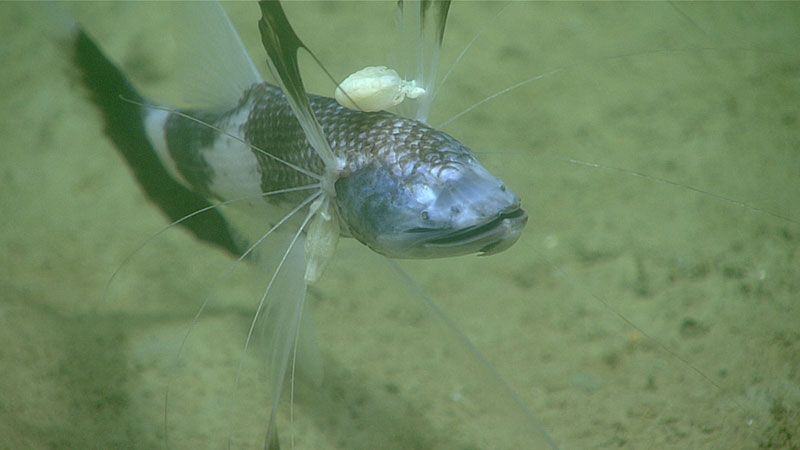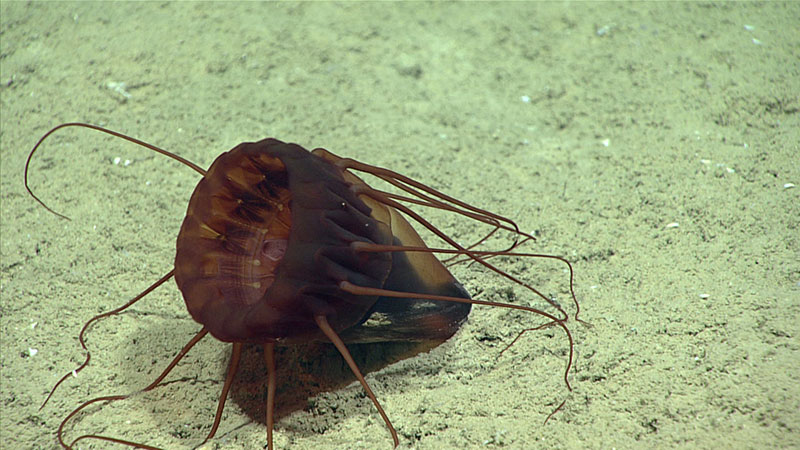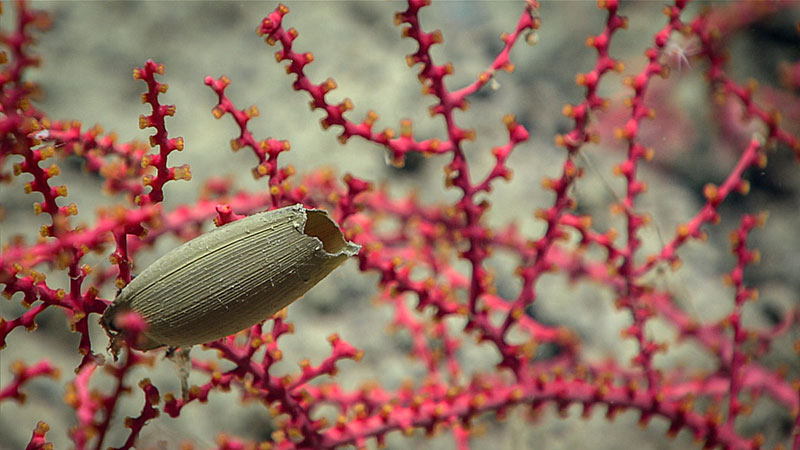-

The tripod fish, Bathypterois viridensis, with parasitic isopods attached to two of its fins. Tripod fishes rest on the seafloor on the tips of elongated rays of their pelvic and lower caudal fins. They use the elongated rays of their pectoral fins as sensory “antennae” that project out and forward as the fish sits facing into the current. Image courtesy of the NOAA Office of Ocean Exploration and Research, Gulf of Mexico 2017. Download larger version (jpg, 732 KB).
-

A coronate medusa, Periphylla periphylla, that collided with the seafloor. These medusae undertake a daily vertical migration (toward the surface at dusk and toward the depths at dawn). It is suspected that this was a reaction to the bright lights on Deep Discoverer; the medusae attempted to swim deeper away from the light they thought was coming from the surface. Image courtesy of the NOAA Office of Ocean Exploration and Research, Gulf of Mexico 2017. Download larger version (jpg, 1.0 MB).
-

An olive-colored empty egg case of a cartilaginous fish – either a skate, ray, or shark – attached to the octocoral Swiftia koreni. Image courtesy of the NOAA Office of Ocean Exploration and Research, Gulf of Mexico 2017. Download larger version (jpg, 998 KB).